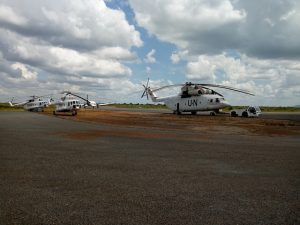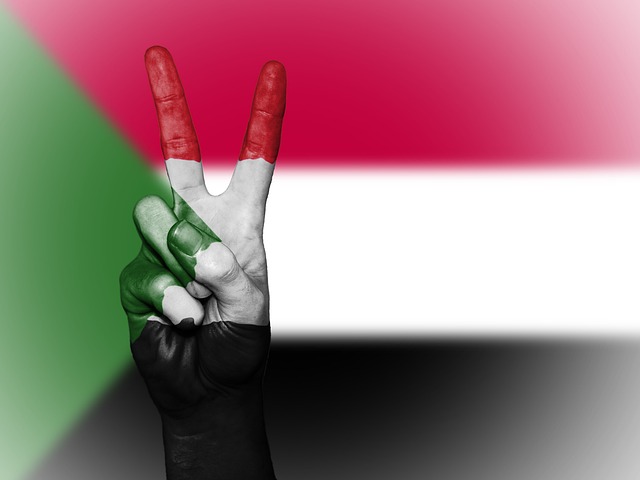The Darfur peace process is a saga that intertwines hope, resilience, and complexity. In order to understand the path towards peace in this troubled region, it is essential to delve into its historical background, intricately woven with challenges that have hindered progress. This article embarks on a journey to unravel the tapestry of the historical background and challenges of the Darfur peace process, shedding light on the arduous path towards lasting peace.
1. The Historical Tapestry: Understanding the Roots
A Region Shaped by Conflict
The historical background of the Darfur peace process can be traced back to the long-standing conflicts rooted in the region. Decades of marginalization, resource disputes, and political tensions have fueled the unrest, exacerbating the complexities of the peace-building efforts.
Conflict Escalation: The Darfur Crisis
The Darfur crisis, which erupted in the early 2000s, brought international attention to the region. Mass displacements, human rights abuses, and atrocities perpetrated against civilians added a new dimension of urgency to the need for a comprehensive peace process.
2. Navigating the Challenges: Roadblocks to Peace
Fragmented Rebel Groups and Intercommunal Violence
The diverse rebel groups in Darfur present a challenge to achieving a unified front for negotiations. The multiplicity of factions, each with their own agendas and grievances, has often led to fragmented peace talks and hindered the formulation of a cohesive agreement. Additionally, intercommunal violence between different ethnic groups further complicates the peace process, as it creates an environment of mistrust and deep-rooted animosities.

Access to Humanitarian Aid and Security Concerns
Ensuring the safety and well-being of the population in Darfur is crucial for the success of the peace process. However, security concerns and restrictions on humanitarian access have posed significant challenges. The presence of armed groups, banditry, and logistical difficulties in reaching remote areas have impeded the delivery of aid and hindered the establishment of a secure environment necessary for lasting peace.
3. Milestones and Progress: A Glimmer of Hope
International Engagement and Mediation Efforts
The international community has played a pivotal role in supporting the Darfur peace process. Mediation efforts led by regional and international actors, such as the African Union and the United Nations, have sought to facilitate negotiations and bridge the gaps between the conflicting parties. These initiatives have paved the way for significant milestones, including the signing of the Darfur Peace Agreement in 2006 and subsequent peace talks.
Reconciliation and Transitional Justice
Recognizing the importance of healing wounds and addressing the legacies of the conflict, efforts towards reconciliation and transitional justice have gained momentum. Initiatives such as truth and reconciliation commissions, community dialogues, and reparations programs aim to foster accountability, promote healing, and build trust among communities.
4. Ongoing Challenges and the Road Ahead
Implementation Hurdles and Lack of Inclusivity
One of the persistent challenges in the Darfur peace process is the effective implementation of agreements and the inclusion of all relevant stakeholders. Ensuring that the commitments made on paper are translated into tangible improvements on the ground remains a complex task. Additionally, ensuring meaningful participation of marginalized groups, including women and youth, is vital for sustainable peace but continues to be a challenge.
Sustainable Development and Rebuilding Trust
Rebuilding trust among communities and addressing the root causes of conflict go hand in hand with sustainable development efforts. Investing in infrastructure, education, healthcare, and economic opportunities is essential for long-term stability. However, limited resources, economic constraints, and the need to prioritize urgent humanitarian needs pose significant challenges to achieving sustainable development goals.
5. The Quest for Lasting Peace: A Collective Effort
The historical background and challenges of the Darfur peace process paint a complex picture, but they also highlight the importance of collective efforts and perseverance. The road to lasting peace in Darfur requires the commitment and collaboration of all stakeholders involved.
Inclusive Dialogue and Participation
Sustaining an inclusive dialogue that engages all parties, including marginalized voices, is paramount. By ensuring that all perspectives are heard, acknowledged, and considered, the peace process can address the underlying grievances and aspirations of the people of Darfur.
International Support and Resources
The international community must continue to provide robust support to the Darfur peace process, both in terms of financial resources and technical assistance. By standing in solidarity with the people of Darfur, the international community can help create an enabling environment for lasting peace and development.
Long-Term Commitment and Adaptability
Achieving lasting peace requires a long-term commitment and adaptability to address evolving challenges. The peace process must be flexible enough to accommodate shifting dynamics and be responsive to emerging issues that may impact the stability of the region.
In conclusion, the historical background and challenges of the Darfur peace process form a complex tapestry that demands our attention and collective action. While progress has been made, significant hurdles remain. By understanding the roots of the conflict, acknowledging the ongoing challenges, and working together, we can strive for a future where peace prevails in Darfur. Let us commit to supporting the Darfur peace process, advocating for inclusivity, and nurturing the hope for a brighter tomorrow.

